Tripping, shopping and the airborne multiplex

I recently escaped my boring job for a week-and-a-half and got away to England, courtesy of my brother Chris’ generosity. The occasion was my nephew’s wedding, and there was a fair amount of time devoted to various family activities surrounding the event. But there was also time to spend a weekend in London with my friend Mark (we met in the late ’80s when both of us were working at a bookstore in Winnipeg: he went away to get a PhD at Cambridge and stayed on in England, working for various arts and cultural institutions, while I floundered around a while before embarking of my fifteen year career as a freelance film editor before ending up as a well-paid government file clerk).
Naturally, as I always do when I go anywhere, I spent a whole bunch of money on movies and movie-related things. Mostly, I boosted the profits of a store named Fopp on Shaftesbury Avenue, just off the Charing Cross Road. Somehow this store manages to stock a huge and varied selection of movies and music, much of which is priced at or below Amazon prices. I acquired a small pile of BFI, Arrow and Masters of Cinema Blu-rays – some upgrades, others new acquisitions. Of course, I could have spent a heck of a lot more.
*
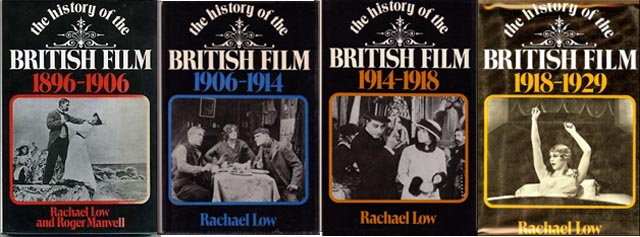
One of my most interesting finds, though, was in a tiny used book store in Stroud, the small town where my brother lives, clinging to the steep sides of a valley at the edge of the Cotswolds. I was wandering around the town centre one afternoon, surprised that there were so many small used bookshops – they’ve all but vanished from Winnipeg – and was even more surprised to find in this particular one, presided over by a very charming elderly woman, an entire wall in the back room devoted to film books. Some of these were fairly standard titles – star and director biographies, genre surveys and familiar histories – but there were also some rarer volumes, including a fairly large selection of annuals dating from the late thirties to the early sixties. These belonged to several different series, but all essentially offered surveys of the year’s movies, gossip about stars, news of productions and brief critical comments about individual films. There were too many of them, and they were a bit too pricey for me to take a decent-sized representative sample, and just one would have been difficult to settle on.
What finally caught my eye were several volumes under the overall title The History of the British Film. These were based on a research project undertaken by a committee set up by the British Film Institute in the ’40s to codify the history of British cinema before it faded from memory. There are four volumes, all written by Rachael Low (the first volume co-authored by Roger Manvell), which cover the whole silent period: 1896-1906, 1906-1914, 1914-1918, and 1918-1929. They’re divided into sections – the business: production companies, producers and directors, financing, and so on; and the art: analysis of a number of representative titles. Volumes 2 through 4 also include appendices listing films produced during the period covered. The first three volumes were published between 1948 and 1950, the final volume not until 1971.
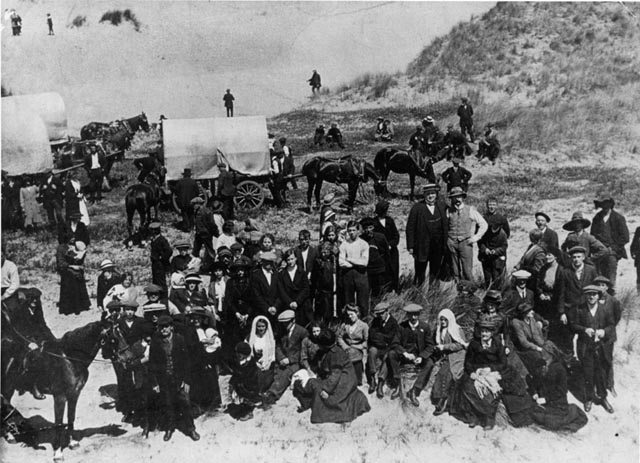
On the shelf were some of the original editions, plus a later reprint of volume one. I finally settled on just the latter, but when I got to the counter the lady told me she had a complete set downstairs, without dust jackets, which she could give me at a discount. Even then, they added up, but I asked to see them so I could think about it. They were a bit musty in that way which makes old books so enticing if, like me, you get a bit of a thrill coming across old and rare things. I succumbed and picked up all four volumes for £9 each. When I got them back to my brother’s house, I discovered some ancillary goodies which made the purchase even more pleasing. Two of them were personally signed by the author to George Pearson. This was a name I didn’t recognize, but quickly discovered held some significance in British film history. A former teacher, Pearson was impressed by early films, decided that they had great potential for educating and informing the masses, and joined Pathe in 1913 as a producer and eventually director. That is, these books had been presented by the author to someone who had played a role in the history being written about. There are also a number of newspaper clippings (brief reviews of the books) and even the letter Low wrote to Pearson when she sent him a copy of the final volume. All of which makes the set even more appealing to me.
When I complimented the proprietor on the size and quality of the film section, she told me I should have seen it a few weeks earlier before a couple of critics had come in and ransacked the shelves.
*
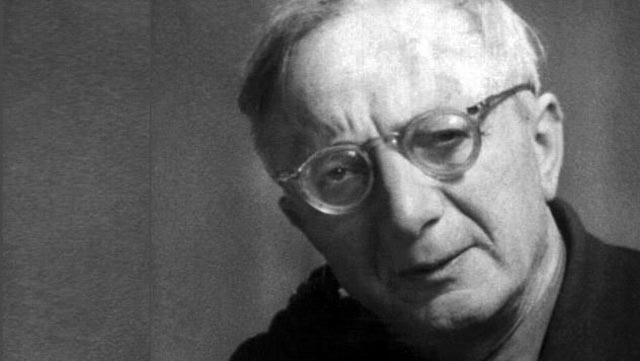
I made the trip’s most surprising film-related discovery in my brother’s study in Stroud. Chris has an entire shelf of books by the German writer Alfred Doblin – best known for his modernist masterpiece Berlin Alexanderplatz. Strangely, this hugely influential and prolific author has seldom been translated into English. I have copies of Alexanderplatz, November 1918: A German Revolution, Tales of a Long Night and Doblin’s first novel, The Three Leaps of Wang Lun, which Chris translated when he was living in Hong Kong (published by the University of Hong Kong press in 1991, and reprinted by the New York Review of Books in 2015). Since then, he has translated Doblin’s Amazonas trilogy, the verse epic Manas, and most recently the monumental future history Mountains Seas and Giants.
One afternoon, as we were chatting in the study, Chris pulled out a thick German paperback and mentioned that it contained a number of film scripts by Doblin. In fact it contained a range of works for performance in a number of media – a radio adaptation of Alexanderplatz, several stage plays, a libretto and the transcript of a filmed interview with the author from 1947. But most intriguing was the section of film scripts and treatments – including drafts of Mrs Miniver and Random Harvest. I had no idea that, like many German writers, filmmakers and artists, Doblin had ended up for a time in Hollywood during his exile from Nazi Germany. In fact, he was under contract at Metro-Goldwyn-Mayer for a while at a reported $100 per week, though it seems unlikely that any of his work ever made it to the screen; during that period many emigres were helped out by friends in the industry, a contract like this merely a means to provide some financial support for the displaced artist.
In addition to the two well-known Greer Garson wartime melodramas (both made in 1942, after Doblin’s contract was terminated), there are several other intriguing pieces – Die Enteisung Gronlands (roughly The Thawing of Greenland), which is likely adapted from part of Mountains Seas and Giants; Bergromance (Mountain Romance), which suggests the mountain films of Arnold Fanck and Leni Riefenstahl; and something called Queen Lear. Before I left England, Chris said he may translate these ten scripts/treatments. If he does, I’ll be able to report on them in more detail.
*
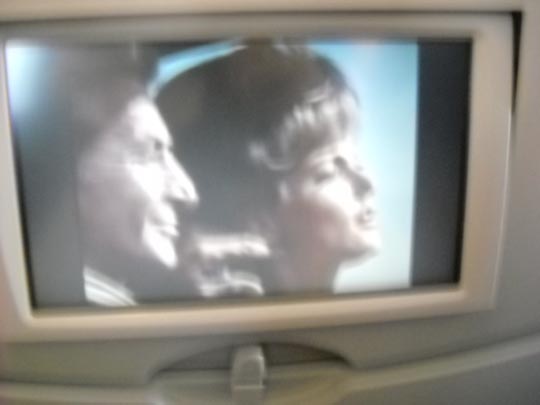
I’ve grown to dislike flying in the past couple of decades. Airports are more like gateways to purgatory and the planes themselves, though they may be bigger and faster, feel more cramped and inhospitable with each journey. But alongside the shrinking space, the extra charges for baggage and food and drink, they now provide personal entertainment centres for every passenger, tiny seatback touch-screens loaded with movies, TV shows, music and games – and for a slightly more zen experience, a map across which a small image of a plane creeps, managing both to indicate the speed of travel and to suggest an interminable inertia; it travels about five inches in seven hours. The reduction of almost 6000 kilometres to that five inches seems somehow emblematic of the weird stasis one feels sitting in a tube which is travelling at over 500 miles an hour yet doesn’t feel as if it’s moving at all.
On this trip it struck me that the physical discomfort, the constant distractions caused by the other passengers and the cabin crew, and all those entertainment options turn the plane into a kind of mirror image of the multiplex, echoing what I dislike about the experience of going out to the movies. And yet, held captive in my seat, I “watched” a number of movies – I use the scare quotes because a movie seen on a small seatback screen with distorted sound coming through cheap airline headphones, fighting against the omnipresent roar of the engines, can’t really be considered an actual cinematic experience. Because of the circumstances, I was pulled towards watching movies which wouldn’t engage me too deeply – why would I want to ruin a good film by watching it in those conditions?
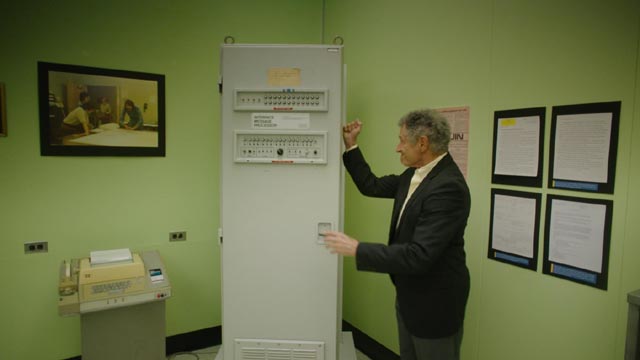
The one exception was Werner Herzog’s Lo and Behold: Reveries of the Connected World (2016). I’m a big fan of Herzog’s documentaries, but this one had a loose, almost random quality which made it less satisfying than many … or did it just seem that way because of where I was watching it? Broken up into a series of chapters, the film is like a collection of short, vaguely related essays constructed around the presence of computers and the Internet in our lives. Being a Herzog movie, it drifts from an initial air of curiosity, even a sense of wonder, towards increasingly apocalyptic ruminations on our apparent urge to replace or even destroy ourselves. But somehow, as interesting as many of the chapters are, they never quite gel into a larger argument. Perhaps the subject is simply too big to encompass in 90 minutes.
Otherwise, I concentrated on genre and action movies – ones which didn’t require anything more than superficial engagement, although a couple of them were trying to go for something a bit deeper.
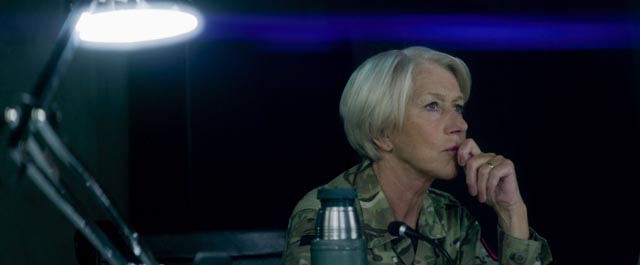
Gavin Hood’s Eye In the Sky (2015) tries to come to grips with the moral and psychological implications of remote control warfare. Strangely for a high-tech thriller, it consists largely of claustrophobic dialogue scenes, with a collection of politicians in an office, a colonel in a military command post and a pair of technicians in a desert drone-pilot station, all moving inexorably towards the point at which a missile will be fired into a residence in an African city. The targets are jihadis preparing a suicide mission, one of whom is an English woman, another an American man. The film runs through various arguments about the justification of assassination, about the legality of killing British and American nationals along with the “foreigners”, and the increasingly fraught issue of collateral civilian casualties – all coming to focus on a young girl selling bread on the street outside the target house.
The arguments feel somewhat schematic, the characters representing various positions – the no-nonsense colonel (Helen Mirren) tightly focused on the need to complete the mission regardless of the consequences; the weaselly politicians unwilling to assume responsibility, passing the buck up the bureaucratic hierarchy as time runs out; and the drone pilots who have to confront the human costs of their detached technological tasks. Ultimately, the script says that the moral costs have to be accepted, that an impossible situation requires the suppression of human feeling in order to meet an unpleasant military and political need. In other words, after a long and at times nuanced argument about this modern form of warfare, the film concludes that remote control assassination, with its inevitable slaughter of innocents on the side, is both justified and necessary.
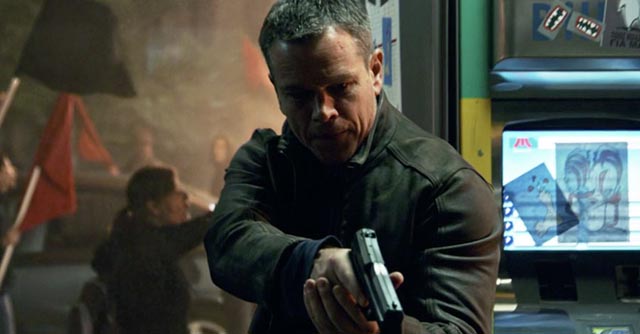
That movie’s gloss of seriousness is entirely absent from Paul Greengrass’ Jason Bourne (2016), the fifth in the series about Robert Ludlum’s amnesiac assassin, and the fourth to star Matt Damon (the franchise attempted to branch off in 2012 with Jeremy Renner as a different Treadstone assassin in Tony Gilroy’s The Bourne Legacy). The new film illustrates some of the main problems of big budget franchise moviemaking; it tries to get busy circling around a central idea which has already been exhausted – we and the character know what there is to know about the sinister government conspiracy which made Bourne what he is, so the script runs through a series of variations on familiar narrative elements; the bad guys, fearing exposure, are determined to destroy their creation, while the good guy is determined to expose the whole scheme. Old characters die, new characters take their place, but ultimately nothing can really change or evolve because if anything too big happens the story will come to an end. So it runs furiously in place, giving an appearance of movement but going nowhere. Sure, Bourne learns a bit about his past, but the pay-off is very small given the scale of the production, and it’s left open-ended because that’s how franchises work; there’s no real beginning, no real end, just a seemingly interminable middle in which characters run and run and run and occasionally kill each other. There’s really no reason for the film to exist other than as a place-holder which the studio hopes will bring in enough money to justify the expense of making it.
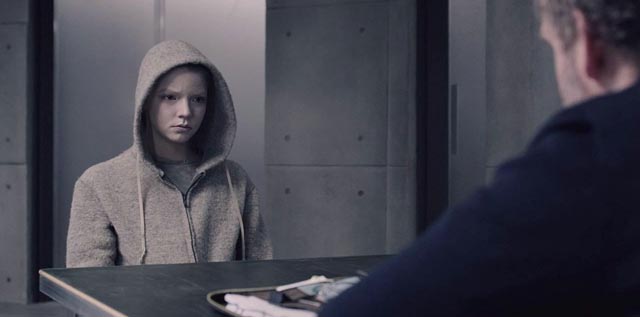
If you want to make movies, it must be difficult to be the son of a hugely successful and visually stylish filmmaker. Brandon Cronenberg managed surprisingly well by following in dad David’s footsteps with Antiviral (2012), a film in which he embraced his father’s biological horrors and made them his own. Luke Scott not only has to contend with his father Ridley’s reputation; he’s also following filmmaking siblings Jake and Jordan. The biggest problem with his first feature, Morgan (2016), is that it’s so derivative – there are obvious echoes of Vincenzo Natali’s Splice (2009) and Alex Garland’s Ex Machina (2015), among others.
Lee Weathers (Kate Mara) is a frosty operative sent by “corporate” to a remote research lab in the woods where something has apparently gone wrong with a genetic engineering project. Morgan (Anya Taylor-Joy, who was so good in The Witch) is a synthetic organism with accelerated growth; only five years old chronologically, she’s physically and emotionally an adolescent who chafes at being kept in a sealed observation room after manifesting violent behaviour. The team which created her are very protective and resent the arrival of Lee, who has been sent to gauge the success or not of the experiment, and to terminate it if she judges it a failure. Is Morgan a dangerous animal, or is she merely acting out of a legitimate defensive instinct? Either way, the bodies pile up until the final, not so surprising revelation. At best, Morgan is a competent B-movie and no doubt it’s unfair to think that Scott should have come up with something more original and stylish because of who his father is; but the fact is it’s rather dull and forgettable, failing to establish a distinctive directorial signature – although his family connections may have helped in landing some big names (Jennifer Jason Leigh, Toby Jones, Brian Cox, Michelle Yeoh, Paul Giamatti) in what amount to supporting roles.
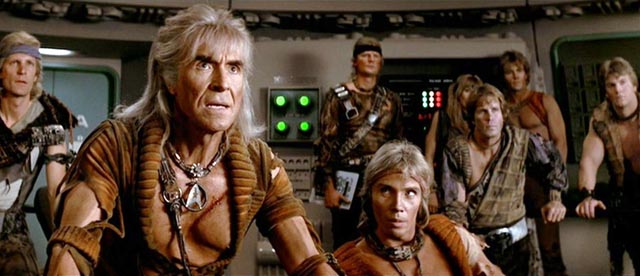
The last and most enjoyable movie I saw on the trip was itself a franchise project: Nicholas Meyer’s Star Trek II: The Wrath of Khan (1982). Coming three years after Robert Wise’s bloated theatrical reboot, which had come a full decade after the cancellation of the original series, Khan was essentially the foundation on which the subsequent multi-strand Trek franchise was based. Unlike the Wise dud, it captured the full flavour of the original series while adding enough scale to justify the big screen. It was rooted in familiar characters, but was smart enough to allow them to grow. Interestingly, it also acknowledged the passage of time; these characters had grown older in the intervening years and that fact became an important part of the story in both action and theme. It was this combination of freshness and comfortable familiarity which showed the way – the next two sequels built on these strengths, and when Meyer returned for the sixth film (after the problematic William Shatner-directed Star Trek V: The Final Frontier), that theme of age, of moving on and making way, became the narrative core. In other words, unlike the Bourne movies, each original-cast film built on the ones which preceded it, creating a longer narrative arc which didn’t attempt to freeze the characters in a place where they would simply repeat themselves for steadily diminishing returns.
Even on a tiny screen, in an old non-anamorphic transfer, Wrath of Khan holds up as a well-crafted piece of nostalgia-tinged entertainment.
Comments